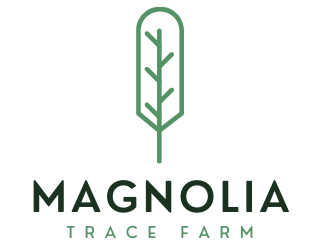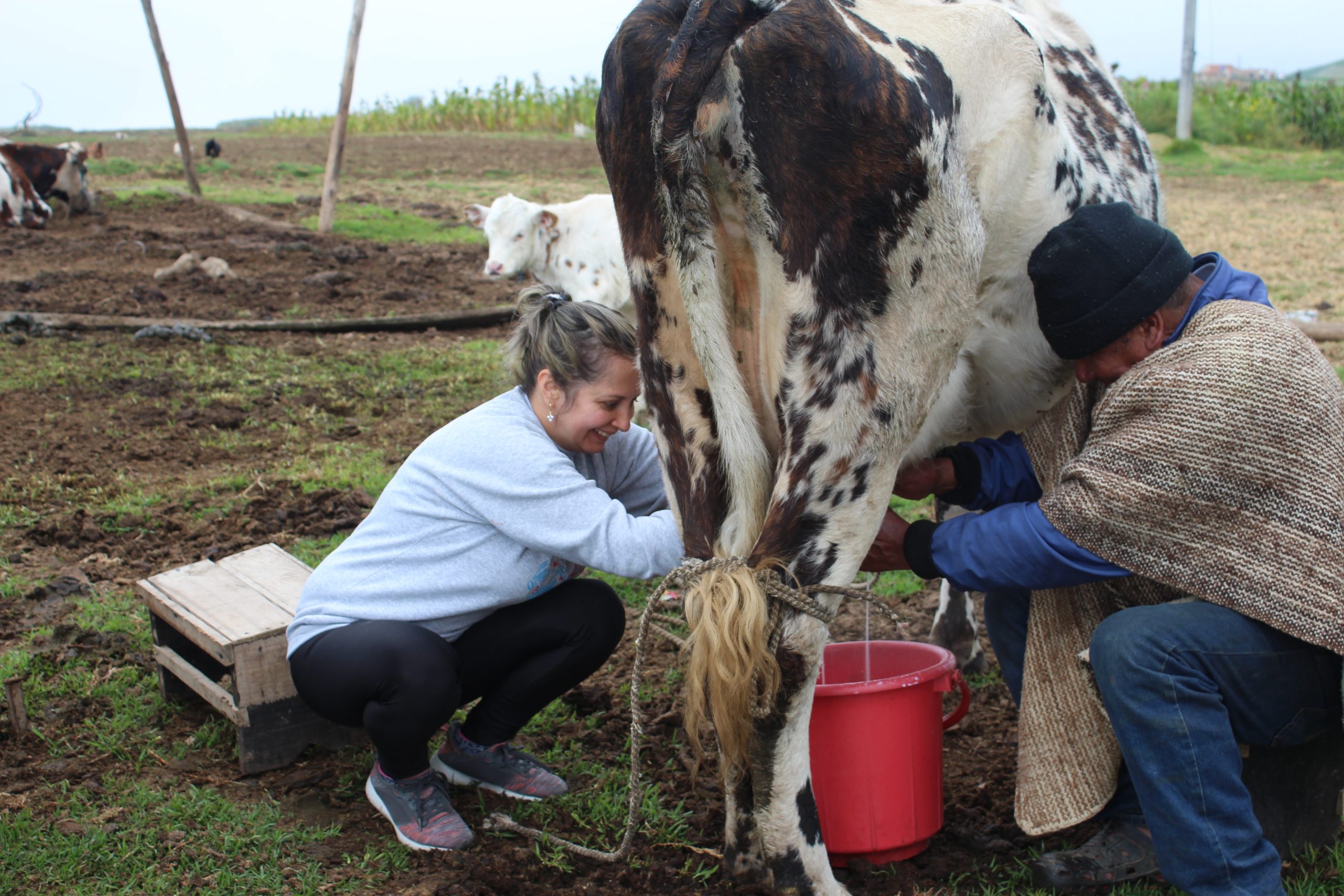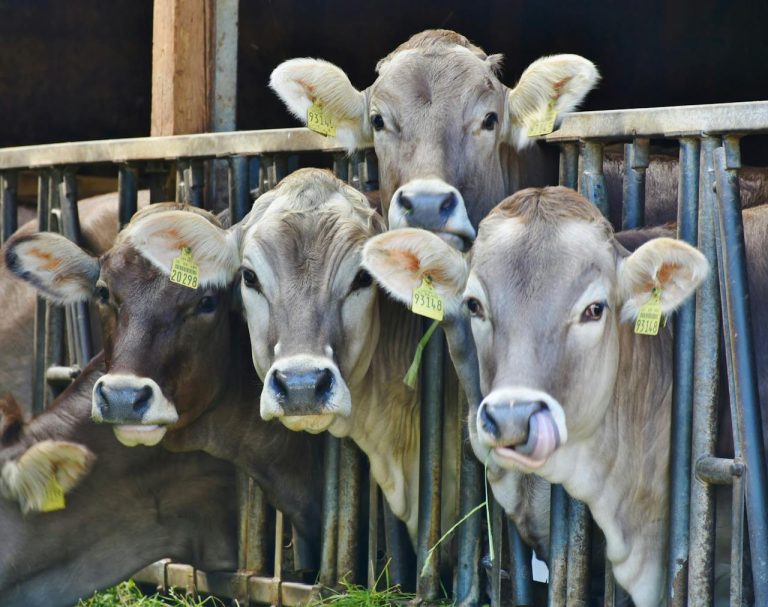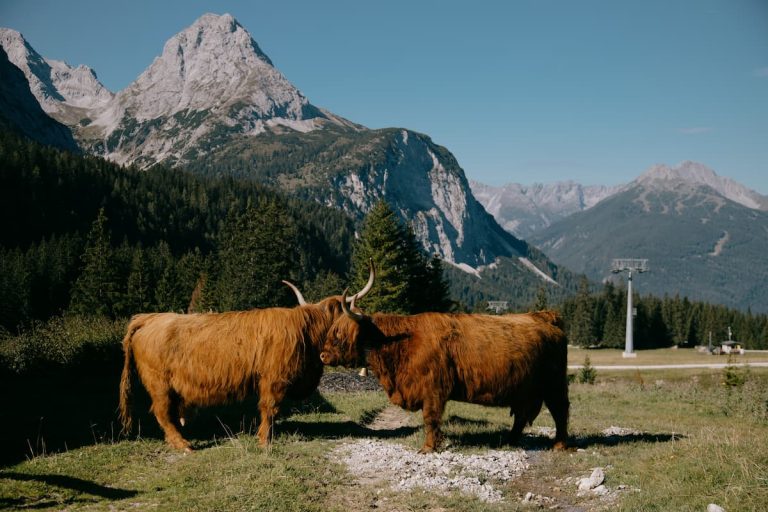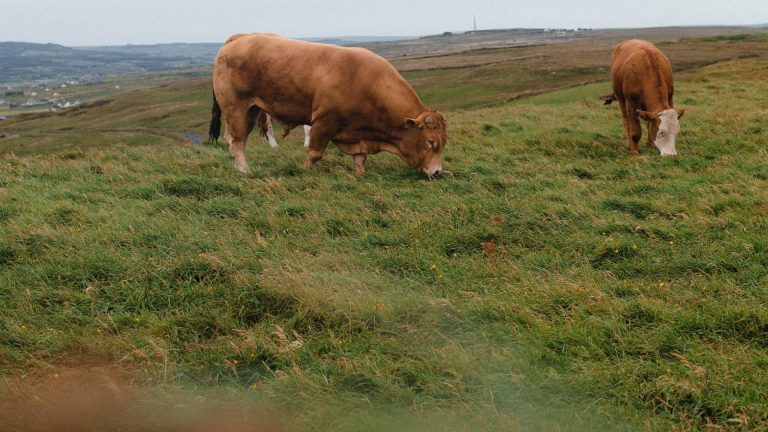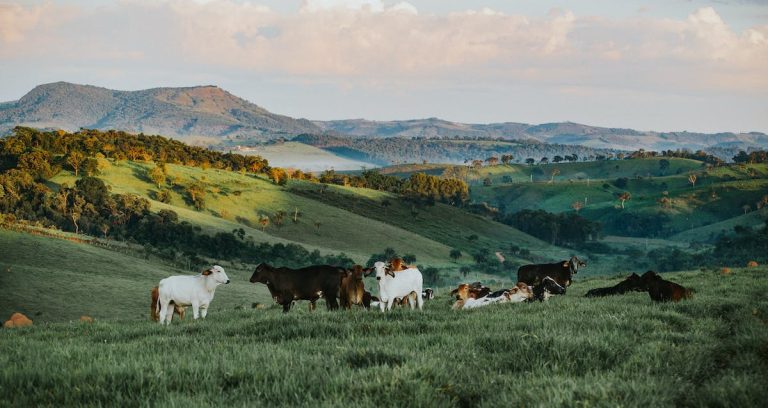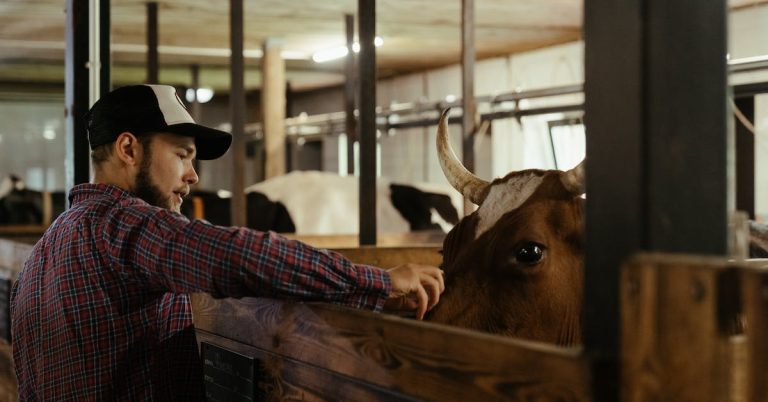Where Can I Milk a Cow? Complete Guide 2023
Where can I milk a cow? Before we get to that milk is a staple in many households, and some people are interested in learning how to milk a cow. However, not everyone has access to a cow or a farm. So, where can you go to milk a cow?
Fortunately, there are several options available for those who want to try their hand at milking cows. One option is to visit a local dairy farm that offers tours or educational programs. Many dairy farms offer tours where visitors can see the cows, learn about the milking process, and even try milking a cow themselves.
Quick Takeaway
There are many places where you can milk a cow, but some of the best places include farms, petting zoos, and educational centers. When choosing a place to milk a cow, it is important to make sure that the cows are well-cared for and that the milking process is sanitary. It is also important to be respectful of the cows and to follow the instructions of the people who are in charge of milking.
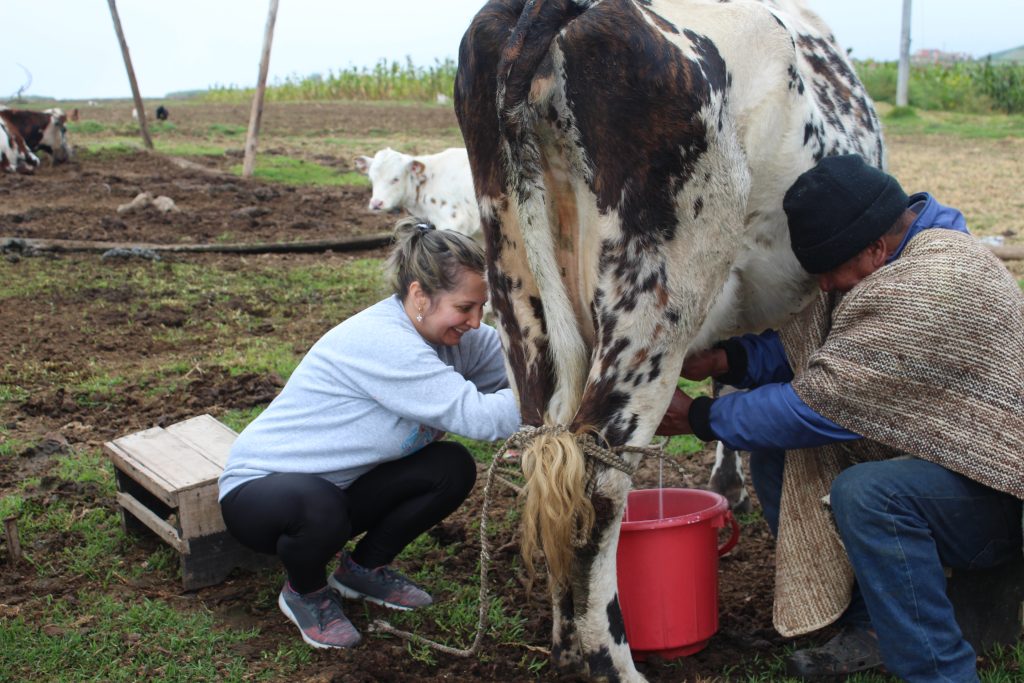
Another option is to attend a county or state fair. Many fairs have a petting zoo or agricultural exhibit where visitors can interact with cows and other farm animals. Some fairs even offer hands-on activities like cow milking demonstrations or contests. Additionally, some cities have urban farms or community gardens that may have cows or other livestock that visitors can interact with.
Understanding Dairy Cows
Dairy cows are a type of cow that is specifically bred for milk production. They are typically larger and have a more docile temperament than other types of cows. Dairy cows are milked two to three times a day, and each milking can produce up to 6-7 gallons of milk.
Types of Dairy Cows
There are several breeds of dairy cows, each with their own unique characteristics. Here are a few of the most common dairy breeds:
Holstein Cows
Holstein cows are the most common dairy breed in the United States. They are known for their black and white markings and are typically larger than other dairy breeds. Holsteins are known for their high milk production, with some cows producing up to 22 gallons of milk per day.
Brown Swiss
Brown Swiss cows are known for their gentle disposition and their ability to adapt to different environments. They are typically larger than other dairy breeds and have a distinctive brown color. Brown Swiss cows are known for their high milk production and the quality of their milk.
Jersey Cows
Jersey cows are a smaller breed of dairy cow, typically weighing around 900 pounds. They are known for their light brown color and their ability to produce milk with a high butterfat content. Jersey cows are often used to produce specialty dairy products like butter and cheese.
Other Dairy Breeds
In addition to Holstein, Brown Swiss, and Jersey cows, there are several other breeds of dairy cows, including Guernsey, Ayrshire, and Milking Shorthorn cows. Each breed has its own unique characteristics and is suited to different environments and management practices.
Overall, understanding the different types of dairy cows is important for anyone interested in milking cows or working in the dairy industry. By selecting the right breed and managing them properly, dairy farmers can maximize milk production and produce high-quality dairy products.
The Dairy Industry
The dairy industry is a vital part of the agricultural sector, providing milk and dairy products to consumers worldwide. Dairy farming is a complex biological system that involves the care and management of dairy cows to ensure they produce high-quality milk. In this section, we will explore milk production, farming practices, and animal welfare in the dairy industry.
Milk Production
Dairy cows are the primary source of milk production in the dairy industry. The amount of milk a cow produces depends on various factors, such as breed, age, and nutrition. On average, a cow produces about six to seven gallons of milk per day. Dairy farmers use various techniques to maximize milk production, such as selective breeding, nutrition management, and milking practices.
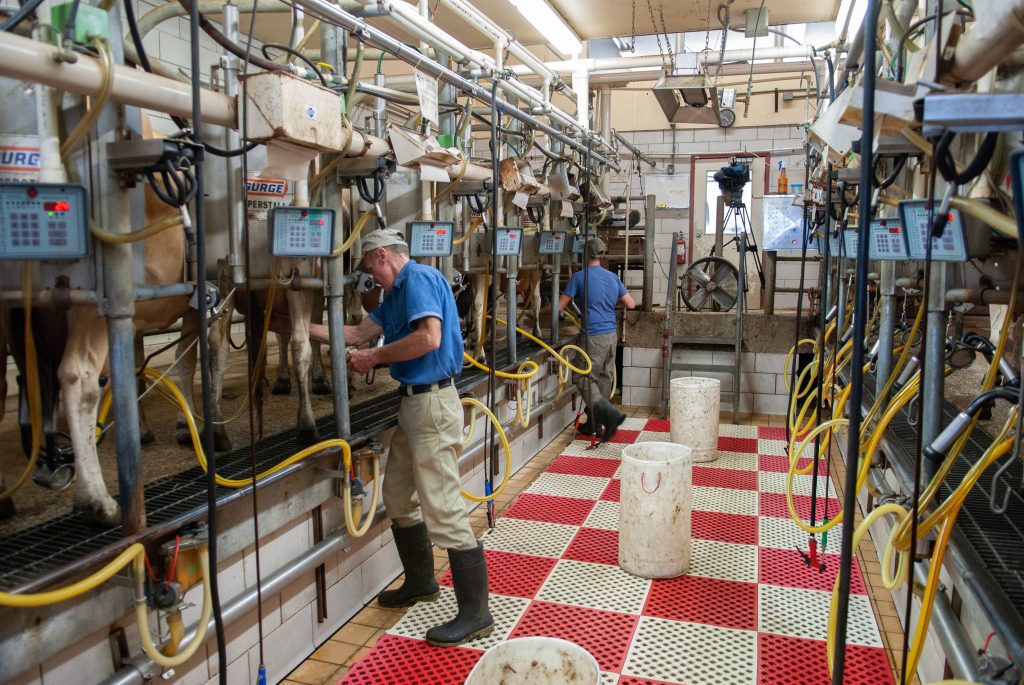
Farming Practices
Dairy farming practices vary widely depending on the farm’s size, location, and management practices. Some farms are small, family-run operations, while others are large commercial farms. Regardless of the farm’s size, dairy farmers must follow strict regulations regarding milk production and animal health. These regulations cover areas such as feed and water quality, animal housing, and manure management.
Animal Welfare
Animal welfare is a critical issue in the dairy industry. Dairy farmers must ensure that their cows are healthy, comfortable, and well-cared for. This includes providing proper nutrition, housing, and medical care.
Additionally, many dairy farmers use growth hormones to increase milk production. While these hormones are safe for cows and humans, some animal welfare advocates argue that they can be harmful to the cows’ health.
In conclusion, the dairy industry plays a vital role in providing milk and dairy products to consumers worldwide. Milk production, farming practices, and animal welfare are all critical components of the dairy industry. Dairy farmers must follow strict regulations to ensure the health and well-being of their cows while maximizing milk production.
Raw Milk and Milk Alternatives
Raw Milk
Raw milk is milk that has not been pasteurized or homogenized. Raw milk is often considered a healthier alternative to pasteurized milk because it contains natural enzymes that aid in digestion and boost the immune system.
However, raw milk can also contain harmful bacteria such as E. coli, Listeria, and Salmonella. The Centers for Disease Control and Prevention (CDC) recommends that individuals who are at higher risk for foodborne illness, such as young children, pregnant women, and the elderly, avoid consuming raw milk.
Milk Alternatives
Milk alternatives are becoming increasingly popular as more people are looking for dairy-free options. Some of the most popular milk alternatives include almond milk, soy milk, coconut milk, and oat milk.
These milk alternatives are often lower in calories and fat than cow’s milk, making them a popular choice for those looking to lose weight or maintain a healthy diet.
It is important to note that not all milk alternatives are created equal. Some milk alternatives, such as almond milk, are naturally low in calcium and may need to be fortified with additional nutrients. Additionally, some milk alternatives may contain added sugars, which can contribute to weight gain and other health problems.
When choosing a milk alternative, it is important to read the label and choose unsweetened, unflavored options whenever possible. The Cleveland Clinic recommends choosing a milk alternative that contains at least 8 grams of protein per serving and is fortified with calcium and vitamin D.
Dietary Guidelines
The Dietary Guidelines for Americans recommend that individuals consume 3 cups of dairy per day. This can include milk, cheese, and yogurt. However, for those who are lactose intolerant or unable to consume dairy, there are plenty of milk alternatives available.
It is important to note that while milk alternatives can be a healthy choice, they should not be used as a replacement for all dairy products. Dairy products are an important source of calcium and other nutrients that are essential for maintaining good health.
Milk Consumption
Overall, milk can be a healthy addition to one’s diet. Cow’s milk is a good source of calcium, vitamin D, and other essential nutrients. However, it is important to choose low-fat or fat-free options whenever possible to avoid consuming too much saturated fat and calories.
For those who are unable to consume cow’s milk, there are plenty of milk alternatives available. When choosing a milk alternative, it is important to read the label and choose options that are fortified with calcium and other essential nutrients.

Where Can I Milk a Cow and How?
If you have ever wondered where and how you can milk a cow, there are several options available to you. Here are some ways to milk a cow and where you can do it.
Milk a Cow on a Dairy Farm
One of the most common places to milk a cow is on a dairy farm. Dairy farms are designed to produce milk, and they have the equipment and facilities necessary to milk cows efficiently.
Dairy farms typically have a milking parlor, where cows are milked using machines. The milking parlor is designed to be comfortable for the cows, with features such as rubber flooring and fans to keep them cool.
Milk a Cow at a Farm Tour
If you are looking for a unique experience, you can try milking a cow on a farm tour. Many farms offer tours where visitors can learn about animal husbandry and farming practices. During these tours, visitors can often milk a cow by hand, under the supervision of a farm guide. This is a great way to experience what it’s like to milk a cow and learn about the process.
Milk a Cow on Your Own Property
If you have your own property, you can also consider keeping a family milk cow. This is a cow that is kept for the purpose of providing milk for the family. Keeping a family milk cow requires a lot of time and effort, as you will need to care for the cow’s comfort and health, as well as milk her regularly. However, it can be a rewarding experience and provide you with fresh, high-quality milk.
When milking a cow, it’s important to remember to be gentle and patient. You should always make sure the cow’s udder is clean before milking, and use proper techniques to avoid injuring the cow or contaminating the milk. Milking a cow can take time, so it’s important to set aside enough time to complete the task properly.
In conclusion, milking a cow can be a fun and educational experience. Whether you choose to do it on a dairy farm, at a farm tour, or on your own property, it’s important to remember to treat the cow with respect and care for her comfort and health.
Uses for Milk
Milk is a versatile ingredient that can be used in many different ways. In this section, we will explore some of the most popular uses for milk, including making ice cream and sour cream.
Ice Cream
Ice cream is a delicious treat that can be made with milk, cream, sugar, and flavorings. Using fresh milk can make a big difference in the taste and texture of your ice cream. Here are some tips for making ice cream with fresh milk:
- Use whole milk for a creamier texture.
- Chill the milk before using it to make ice cream.
- Use a high-fat cream (such as heavy cream) for a richer flavor.
- Add flavorings such as vanilla extract or cocoa powder to the milk mixture before freezing.
Sour Cream
Sour cream is a tangy condiment that can be used in many different dishes, from baked potatoes to tacos. Making sour cream with fresh milk is easy and can result in a delicious, creamy product. Here’s how to make sour cream with fresh milk:
- Combine fresh milk and a culture starter (such as buttermilk or yogurt) in a clean jar.
- Cover the jar with a clean cloth and let it sit at room temperature for 12-24 hours.
- Once the milk has thickened and becomes tangy, refrigerate it until ready to use.
Human Consumption
Fresh milk is a nutritious and delicious beverage that can be enjoyed on its own or used in cooking and baking. It is rich in calcium, protein, and other essential nutrients. However, it is important to handle fresh milk properly to prevent contamination and spoilage.
The Future of Dairy Farming
As the world’s population continues to grow, so does the demand for dairy products. The future of dairy farming will need to address the challenges of meeting this demand while also considering organic standards, animal health and welfare, and environmental sustainability.
Organic Standards
Organic dairy farming is a growing trend that emphasizes the use of natural resources and the elimination of synthetic chemicals. In the United States, the U.S. Department of Agriculture (USDA) sets the standards for organic dairy farming.
These standards require that cows have access to pasture and green pastures and that they are fed organic feed. Organic dairy farmers also use natural methods to control pests and diseases, and they avoid the use of antibiotics and growth hormones.
In the United Kingdom, the Soil Association sets the standards for organic dairy farming. These standards require that cows have access to outdoor space and a grass-based diet.
The Soil Association also requires that farmers use natural methods to control pests and diseases and avoid the use of antibiotics and growth hormones.
Animal Health and Welfare
Animal health and welfare is a top priority in the future of dairy farming. Farmers are implementing new technologies to monitor the health of their cows, including wearable sensors and rumen boluses. These technologies allow farmers to detect early signs of illness and take action before it becomes a serious problem.
The foot system is also an important aspect of animal health and welfare in dairy farming. Farmers are using new materials and designs for cow flooring to reduce the risk of lameness and other foot problems. Outdoor access is also important for animal health and welfare, as it allows cows to engage in natural behaviors and get exercise.
Environmental Sustainability
As the world becomes more aware of the impact of agriculture on the environment, the future of dairy farming will need to focus on sustainability. Farmers are implementing new practices to reduce their environmental impact, such as using renewable energy sources, reducing water usage, and minimizing the use of synthetic fertilizers.
In conclusion, the future of dairy farming will need to address the challenges of meeting the growing demand for dairy products while also considering organic standards, animal health and welfare, and environmental sustainability. By implementing new technologies and practices, dairy farmers can ensure that their operations are sustainable, efficient, and profitable.
Conclusion
In conclusion, milking a cow can be a rewarding and educational experience for those interested in learning more about where their food comes from. However, it is important to note that not everyone has access to cows or the facilities to properly milk them.
In North America, the United States is the largest milk producer, with over 218 billion pounds of milk produced last year alone. While many dairy farms offer tours and milking demonstrations, it may not be feasible for individuals to milk cows on their own.
For those interested in learning more about milking cows, the University of New Hampshire offers a course on dairy herd management that covers topics such as milking techniques and milk quality.
It is also important to note that milk from cows can cause health problems for some individuals, such as lactose intolerance or milk allergies. It is recommended that individuals speak with a healthcare provider before consuming milk or dairy products.
If you have further questions about milking cows or the dairy industry, it is recommended that you reach out to local dairy farms or industry organizations for more information.
Overall, milking a cow can be a unique and educational experience, but it is important to consider the resources and knowledge necessary to properly care for cows and produce safe, high-quality milk.
